‘Karamo’ moves into national spotlight with a new take on daytime TV drama
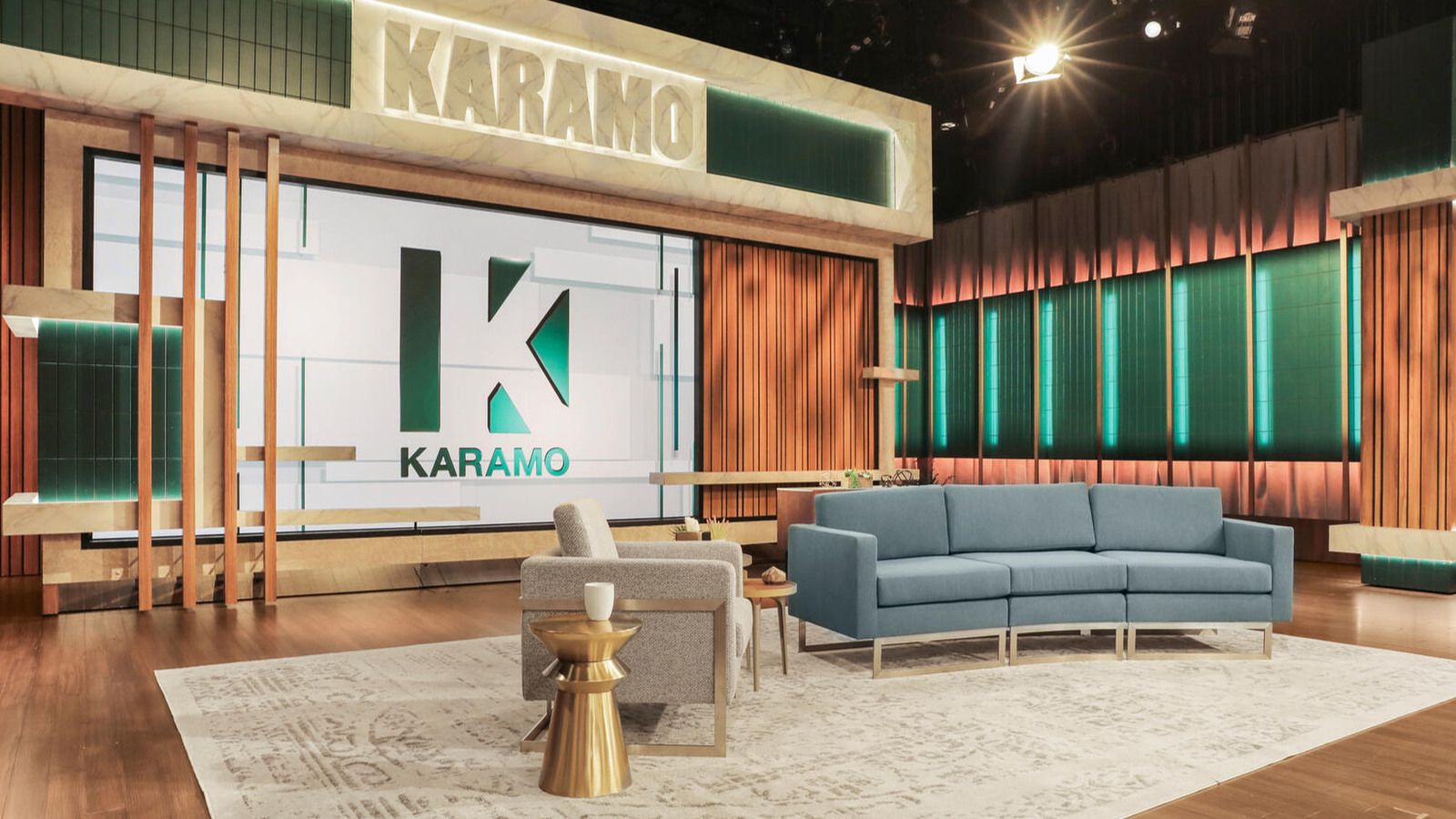
Weekly insights on the technology, production and business decisions shaping media and broadcast. No paywall. Independent coverage. Unsubscribe anytime.
It’s no secret daytime TV is full of drama, but production designer James Pearse Connelly saw creating the set for the new syndicated talk show that replaced “Maury,” “Karamo,” as a “call to action to reframe the drama.”
Those are tall orders for several reasons, including the fact that launching a show featuring Karamo Brown — who rose to fame on “Real World” and then Netflix’s revival of “Queer Eye” — into national syndication was a significant boost in his career that meant Connelly needed to create a standout space.
The “Karamo” set also stands on historic ground — at least in the world of broadcasting.
Studio A inside NBCUniversal’s Stanford Media Center is where Jerry Springer’s guests battled it out before the show ended. Today, it’s also where Steve Wilkos, Springer’s longtime security manager, produces his own talk show. “Maury” also used the space — with all three programs bringing their own type of drama.
“Karamo” isn’t short on drama. Episodes feature titles such as “I’m 17, Are You My Daddy?” and “Unlocking My Phone … But You Have a Mistress.” However, the show was crafted from the beginning to tackle such topics with a more carefully thought-out approach.
Connelly worked closely with NBCU from the early stages of developing the show’s pilot.
Early decisions included using green as a primary color palette for the entire brand — and Connelly took cues from that to carefully select a shade that would complement a wide range of skin tones while also feeling modern and fresh.
In the end, the green used on set is accomplished primarily from custom glass tiles that can be lit in a variety of ways to control how they read on camera.


When creating the set, Connelly decided to create an environment that was unmistakably a set. It’s not meant to mimic a Chicago loft, like Springer’s set did with its infamous faux brick walls.
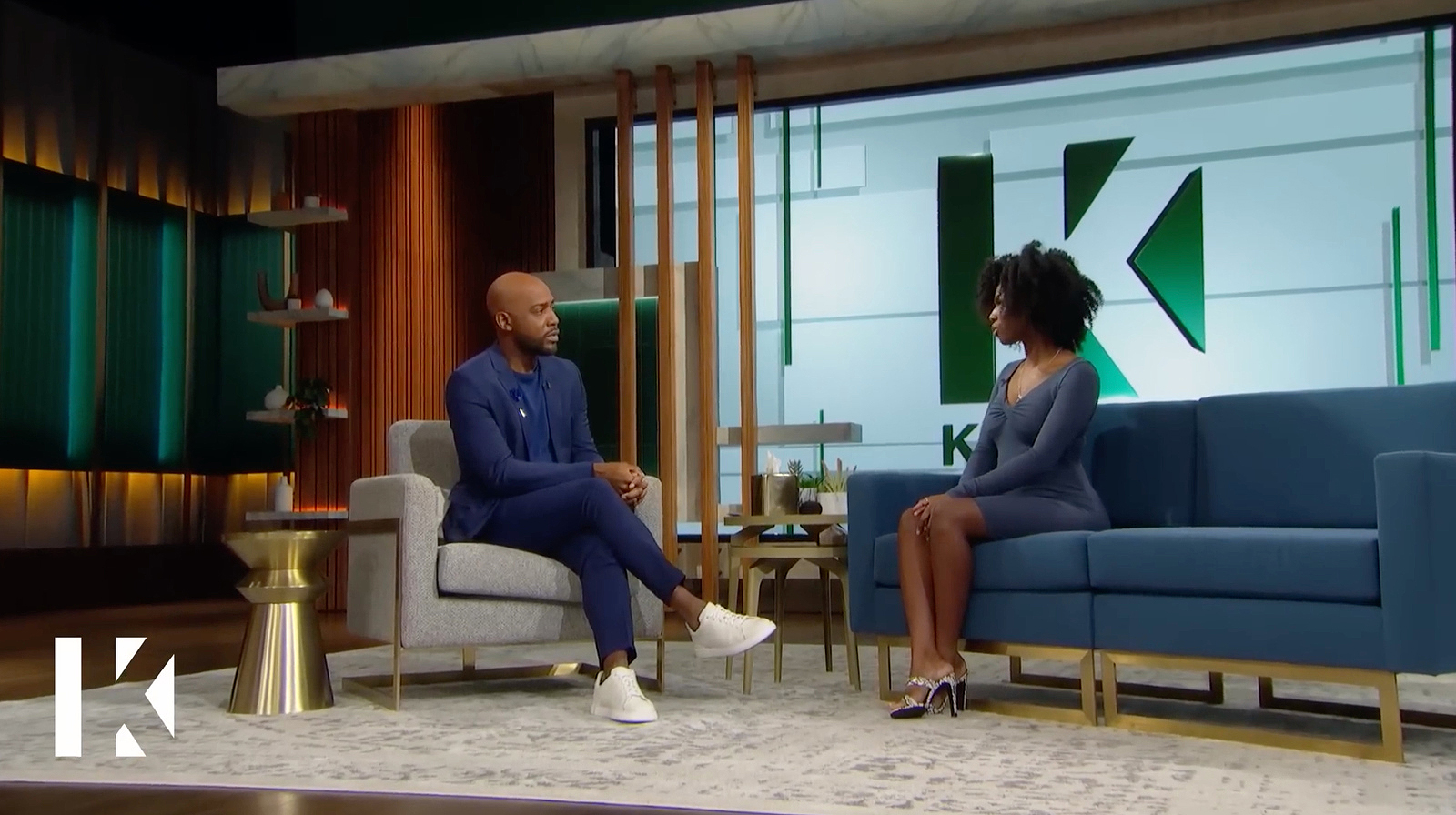

It’s also significantly different from the other national talk show set Connelly has to his credit — “The Kelly Clarkson Show,” which draws inspiration from the interior of a barn.
In the end, Connelly did keep one common aspect of talk show set design in place: A large seamless video wall dominates the center of the set.
“Every show has an LED screen to the point you almost forget it’s there,” he said, noting that they’ve become so popular because they give producers flexibility in showcasing branded and topical imagery. However, Connelly broke the convention of a 16:9 rectangle, opting to expand it “panoramically.”
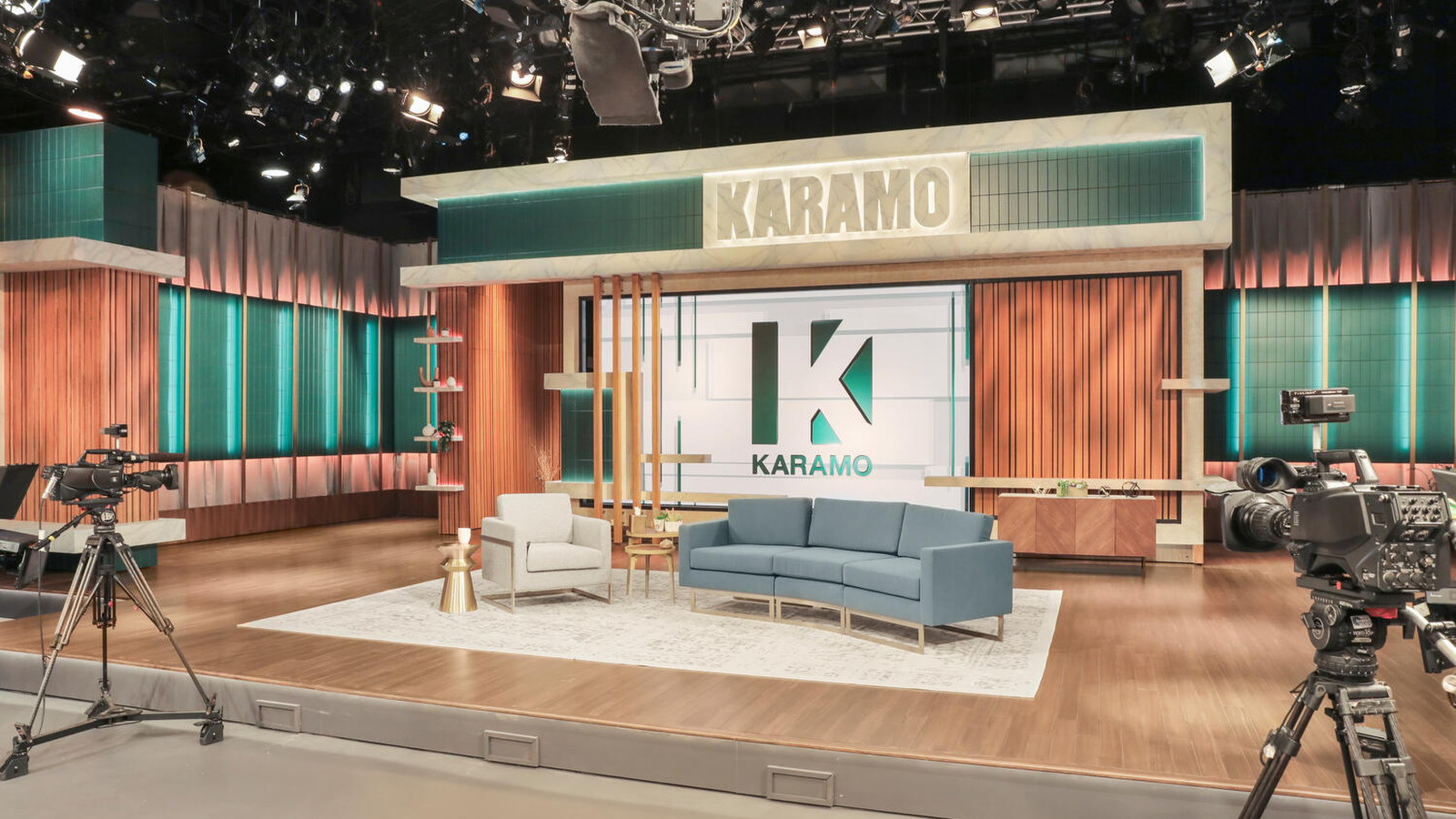

This includes adding hard scenic elements that layer over parts of the camera-left side of the LED screen, such as a segment of green tile with a faux marble border and vertical wood slats, blurring the line between hard scenery and LED.
“Who cares if I always have clean rectangles? Otherwise, it looks like a news show and ‘Karamo’ is not that,” said Connelly.
Surrounding the core of the set are two walls covered in segments of those green glass tiles with vertical metallic bars and integrated lighting reflected off the surfaces. Above and below the tilework is velour drapery bordered by more integrated lighting elements to bring out its flowing and perfectly imperfect forms.
Far out on either side of the set is a thick, wood-clad column boasting a tiled header element that serves as a sort of quasi-proscenium that adds intimacy, giving the set its own distinct footprint.
Connelly could also rely on conversations with Brown to bring aspects of his personality to the space. The two have known each other for quite some time.
“He’s not a fussy guy,” said Connelly, noting one strategy he used was to keep the set clean by not using more key materials than could be counted on one hand.
“To break that up and keep it from being so boring, I’m using light to bring other qualities to it,” Connelly explained, noting how the glass tile can go from a matte, solid look to a glossier, more glamorous look depending on how it’s placed and lit.
Likewise, gold and amber wood tones with light faux Carrara marble can appear rich and textured or sleek and modern depending on how it’s used and how lighting hits it — as well as that velour.
Color shades and lighting, especially the unique shade of green, had to be carefully selected and tested to work with a variety of skin tones that the show’s host and often diverse guests bring to viewers.
Another crucial part of the design is the on-set furniture.
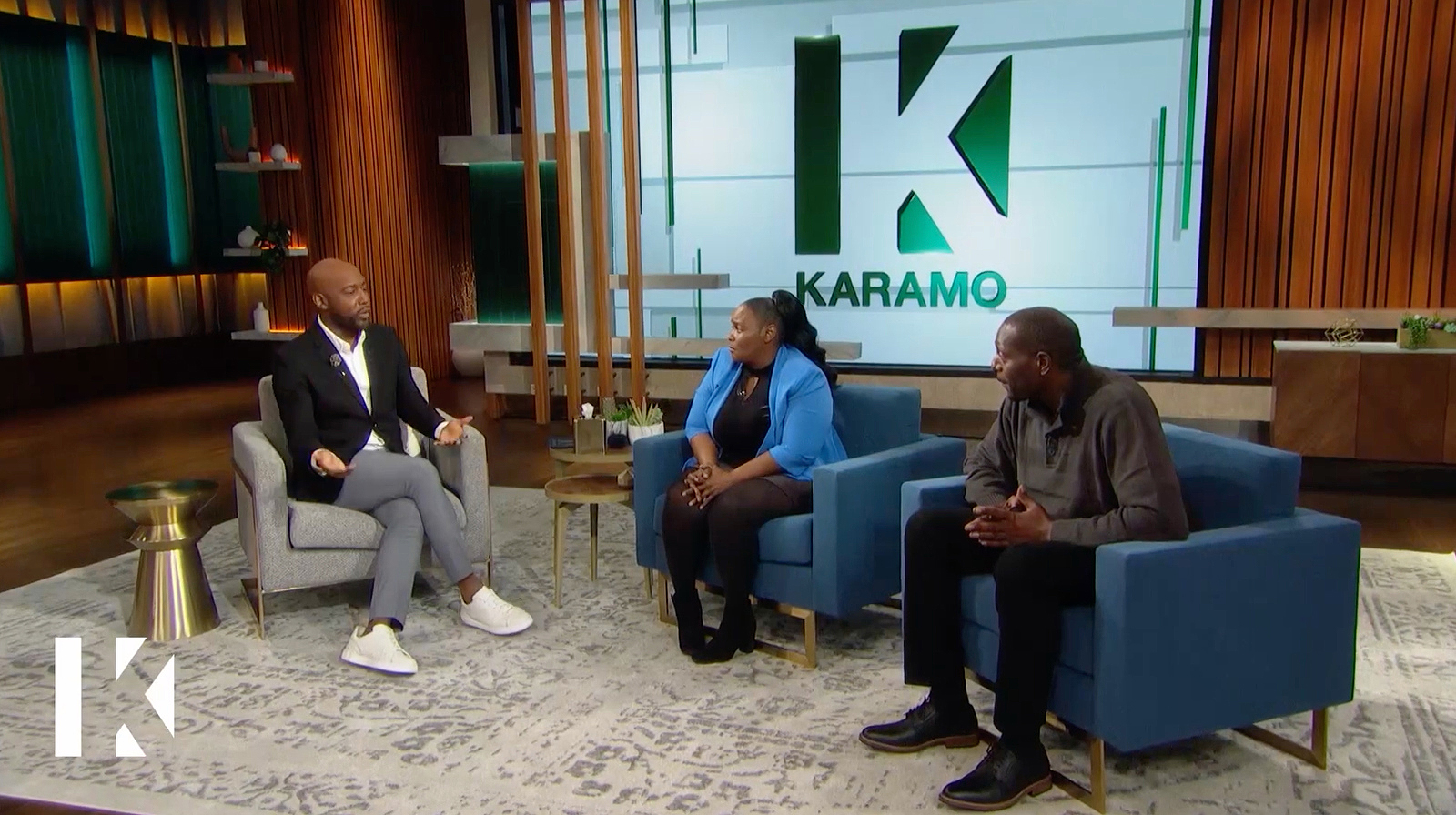

The original plans called for building Brown a custom chair after the pilot was shot, but after trying out multiple options, the host and Connelly ultimately decided to stick with the same one — which happens to be from HomeGoods.
For guests, Connelly designed a custom piece that can change from a multi-person sofa setup to a smaller loveseat or even two club chairs thanks to removable arms that can quickly snap on.


The blue shade of this piece was selected to be a happy medium between the green tile and other colors on the set, a decision meant to make it visually less competitive and distinct from the host chair. Similar pale blues pop up here and there — including the printed cards Karamo uses to help guide segments.
Connelly’s set also includes multiple open display shelves with carefully curated accessories.
While trying to pick out what item to place where, Connelly estimates he brought in about four times as many things as actually ended up being used.
Each one was tested for how it looked on camera from all possible angles as well as with multiple lighting options where applicable. Tests were done with people in front of each item — as well as to see how everything looked in wider shots.
Lighting for the studio was designed by The Lighting Design Group led by Josh Windhausen and Steve Brill.
Once the painstaking process of arranging and testing everything was done, the pieces were glued down to ensure they were always in the exact same place, something that’s particularly important because the Karamo set has to be broken down and stored when another production uses the space.
When it comes to these objets d’art, Connelly has noticed that despite how small they may seem, viewers often come to rely on them.
“That element, as generic as it may seem, is reliable. It’s something they can rely on seeing there each day and if it goes missing, someone will notice,” he said.
In addition to creating the “Karamo” set itself, Connelly also worked with NBCUniversal to revamp the audience seating area, which is shared with “Wilkos” and could be used in future programming produced in the space.
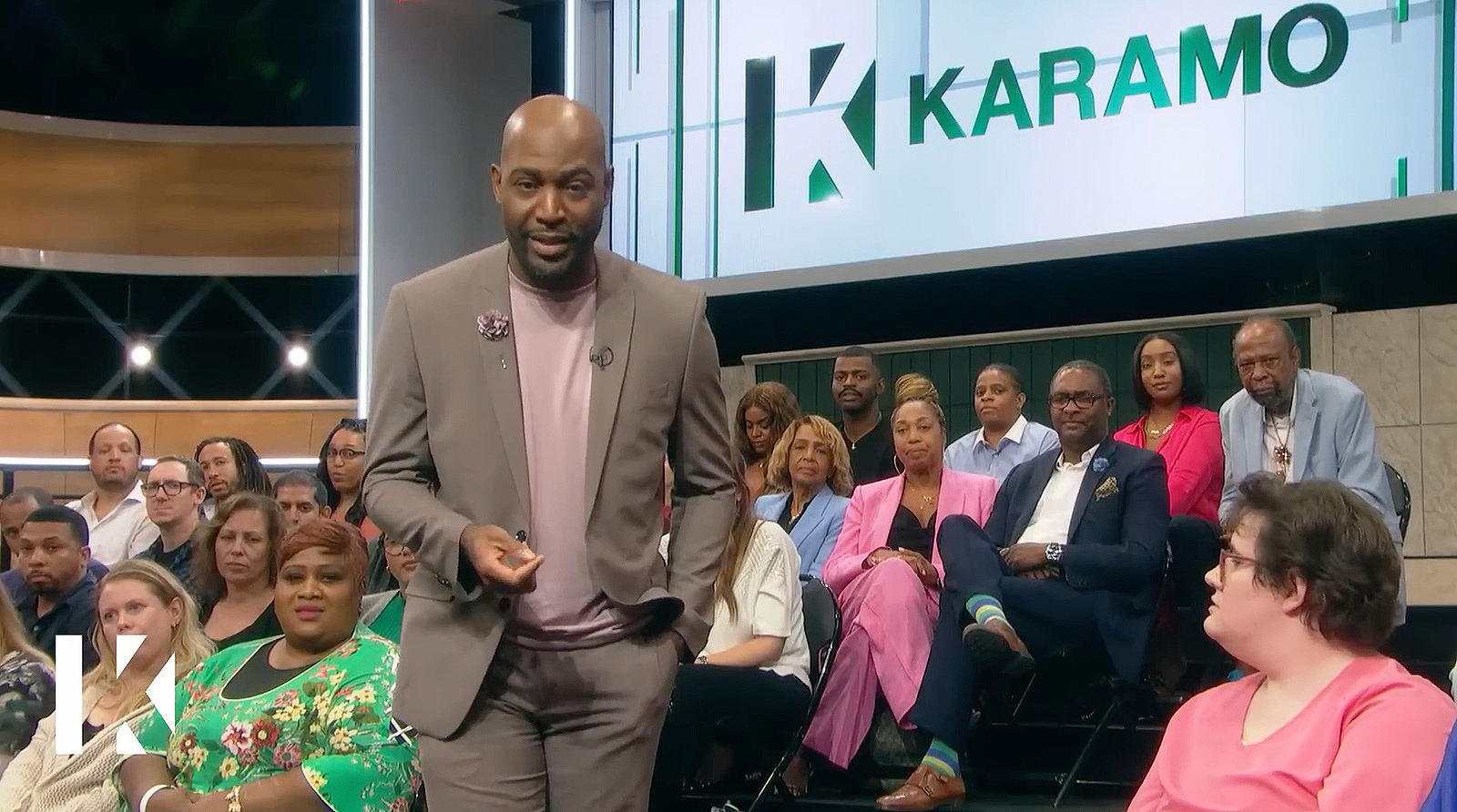

Updating this area included improving traffic flow and the audience’s view as well as opening up more flexibility in showcasing branded graphics thanks to a new video panel.
While some crew inevitably has to remain on the floor between the audience and set, the renovations also included creating subtle spaces that allow the show to move some crew members off the floor in front of the audience, giving them closer connection to the action on-set and also making it easier to spin cameras around and shoot into the audience without having to worry about too much technical gear or crew members being filmed.
This is key to letting Brown connect with the studio audience for segments as well as letting producers capture reaction shots from the often dramatic pieces of information that are talked about on stage.


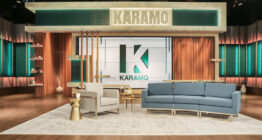




tags
J.P. Connelly, James Pearse Connelly, JPConnelly, Karamo, Stamford Media Center, syndicated, talk show set design, Talk Shows, The Lighting Design Group
categories
Entertainment, Heroes, Set Design, Talk Show Set Design